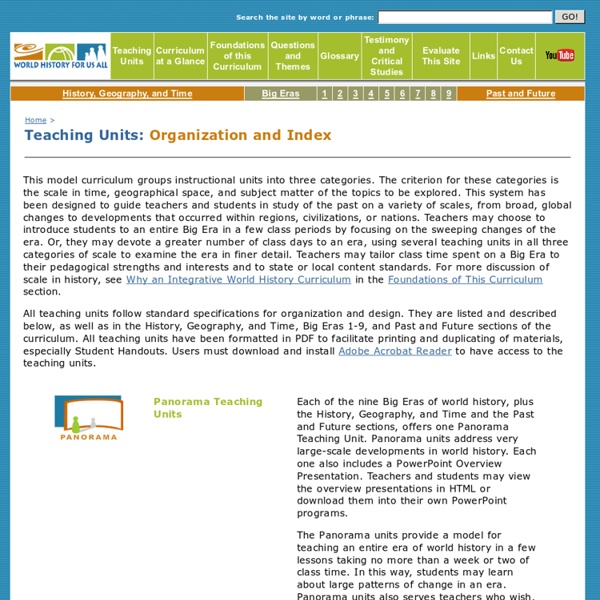Human Migration: The Story of a Community
Grades K-2 Overview: Around the world and in our own communities, people move in and out of places every day, and they have done so throughout human history. Their patterns of movement reflect the conditions of an ever-changing world and, in turn, impact the cultural landscapes of the places they leave and the places they settle in ways that often last well beyond their own lifetimes. This lesson will help students understand some key concepts of human migration through the examination of maps and migration patterns. Connections to the Curriculum: Geography, demography, history Connections to the National Geography Standards: Standard 1: "How to use maps and other geographical representations, tools, and technologies to acquire, process, and report, information from a spatial perspective" Standard 9: "The characteristics, distribution, and migration of human population on Earth's surface" Standard 10: "The characteristics, distribution, and complexity of Earth's cultural mosaics" Time:
2,500,000 BCE to 8,000 BCE Timeline : From Cave Paintings to the Internet
4339 entries. 93 themes. Last updated April 13, 2014. Circa 2,500,000 BCE – 500,000 BCE The First Industrial ComplexCirca 2,400,000 BCE – 1,400,000 BCE Homo habilisCirca 1,950,000 BCE – 1,780,000 BCE A New Hominid Species is Discovered with the Help of Satellite ImageryCirca 1,800,000 BCE The Oldest Hominin Fossils Found Outside of AfricaCirca 1,800,000 BCE – 141,000 BCE Pithecanthropus erectus, the First Known Specimen of Homo erectusCirca 1,800,000 BCEThe Earliest Completely Preserved Adult Hominid SkullCirca 1,650,000 BCE – 100,000 BCE Acheulean or Mode 2 IndustriesCirca 1,530,000 BCE – 1,510,000 BCE The Earliest Preserved Footprints of Our AncestorsCirca 1,500,000 BCE Early Humans Make Bone ToolsCirca 1,500,000 BCE – 790,000 BCE The Earliest HearthsCirca 1,500,000 BCE The Most Complete Early Human Skeleton Circa 1,400,000 BCE The Earliest Flint Tool Found in EuropeCirca 1,200,000 BCE The Earliest Human Remains from Western EuropeCirca 950,000 BCE – 780,000 BCE Evidence of Early Trade Routes?



